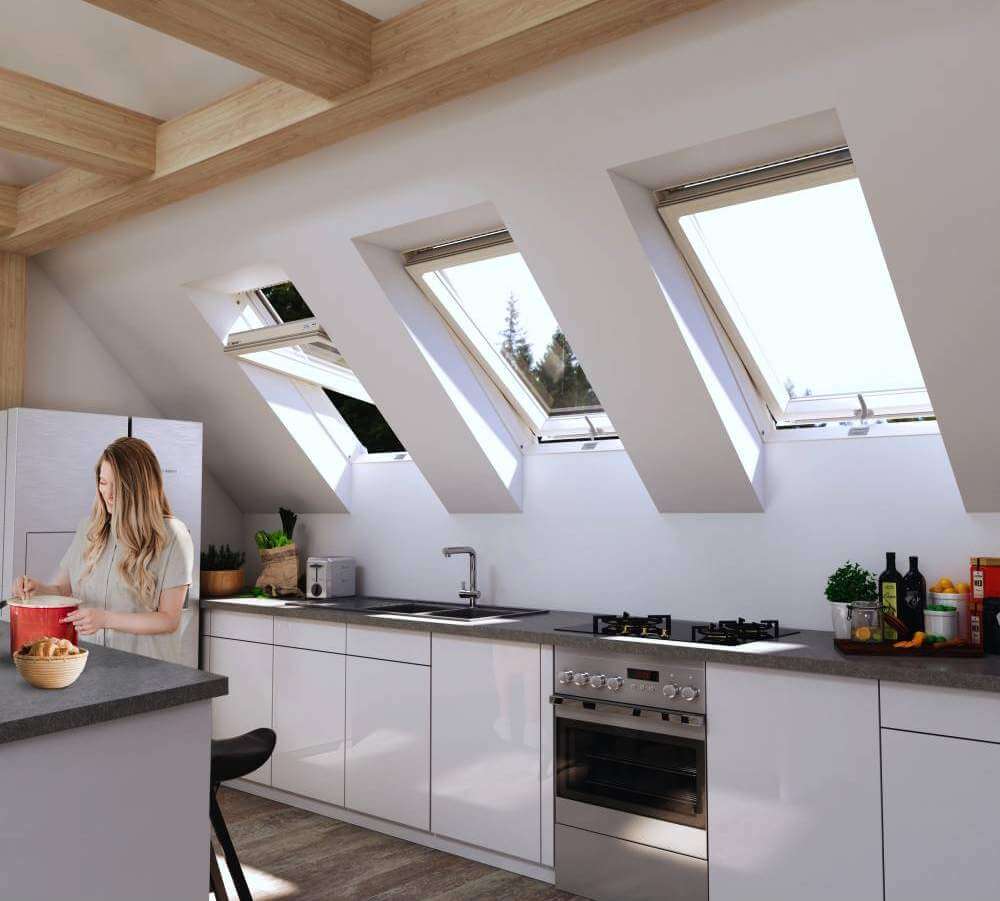Finally renovating your home? Looking for ways to improve its curb appeal? Maybe thinking about a loft conversion? Choosing the right windows will be the key to success in all of these projects. But there are many window types to choose from, and many homeowners don’t know how to go about it.
The window frame material and type impact how much maintenance the window needs, insulation and energy bills, durability, longevity, and much more. Homeowners can’t afford to make the wrong decision. This is where this article comes in! We’ll guide you through the most common window frame types and their qualities, advantages and disadvantages so you can make an informed choice!
Table of Contents
Types of Window Frames
#1 Wood Window Frames
Wood is foremost among the most common window frame materials. Its flexibility, affordability, and reliability make it a favourite of many. It is relatively low-maintenance and can come in a variety of styles and shapes.
Timber windows are divided into multiple subcategories depending on the wood used. Oak, pine, mahogany, and many other wood types are commonly used as frame materials, and they each have unique properties that carry over to the window frames.
An oak window frame is renowned for its durability and usually features a simplistic, chic design, while mahogany window frames are famous for their characteristic, bright mahogany colour and luxury designs, making them excellent for period properties.
The downsides of timber windows include high maintenance and subpar insulation. The windows need to be regularly touched up and repainted to look their best. Ensuring high energy efficiency can be a difficult, though doable task, with wood windows.
#2 uPVC Windows
Made from synthetic polymer, uPVC sees widespread use in construction work and makes for great window frames. Being affordable, having a clean look, and offering excellent insulation make uPVC frames popular in domestic and commercial settings.
uPVC isn’t without its downsides. Due to limitations inherent to synthetic polymer, uPVC windows come in a relatively limited set of aesthetics and designs, especially vis-a-vis wood window types. Additionally, though they require virtually no maintenance, uPVC windows generally don’t last as long as the other types. Due to yellowing and deterioration, an uPVC window frame usually lasts between 15 to 20 years.
#3 Aluminium Windows
Aluminium windows are the go-to choice for a sleek, modern look. They have been a mainstay in British interior design for more than a century, which is a testament to their popularity and flexibility as window materials.
Aluminium windows aren’t just durable and offer minimal heat loss, but they are also environmentally friendly and recyclable. Fitted with triple-glazed panes, these windows will be great additions to minimalistic and modern homes.
Aluminium windows are sadly a bit limited in their design. If you are going for a rustic or homely window style, for example, it can be hard to hit the mark with an aluminium frame.
#4 Composite Window Frames
“Composite” frames include a wide genre of frames that include more than primary material in their construction. The most common combination is timber wood with aluminium cladding, though it is by means the only one.
Composite frames are highly flexible. They come in multiple window styles and offer a host of benefits from great energy efficiency to superior durability depending on the materials used in their construction.
A composite window frame is ultimately as good as its materials and craftsmanship. With most being proprietary designs by specific brands, the frame’s characteristics and quality will depend on how reliable and truthful the company’s marketing material is.
#5 Fibreglass Windows
Fibreglass is plastic reinforced with glass fibres. It is a highly durable material that has many domestic and industrial applications from use in aeroplanes to use as window frame material.
Due to their durable, lightweight construction, fibreglass windows offer more natural light and excellent sound insulation. Coupled with energy-efficient designs, these frames are a great choice for homeowners.
For its excellence, fibreglass frames are luxury items, and they have all their trappings. In other words, they are substantially more expensive than the alternative, have limited suppliers, and require great care during and after installation.
